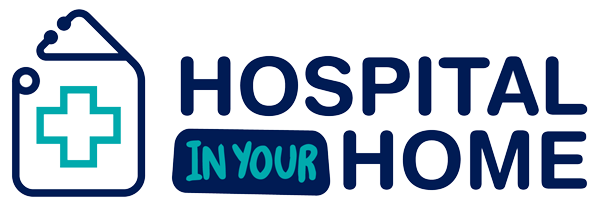Building Healthier Communities Together: The Power of Collaborative Care

The concept of collaborative care has emerged as a beacon of hope for addressing some of the most pressing challenges communities worldwide face.
This approach, which emphasizes the importance of teamwork and communication among healthcare providers, promises to revolutionize patient care by ensuring that individuals receive holistic and coordinated services tailored to their unique needs.
At the forefront of this transformative movement is NovellaCare, a pioneering organization committed to bridging the gap between primary care providers and specialized medical services to enhance health outcomes and foster healthier communities.
Understanding Collaborative Care
Collaborative care transcends traditional healthcare delivery models by fostering a unified approach to patient treatment. It is founded on the principle that healthcare should not be a disjointed experience, with patients shuffled between specialists without adequate communication or coordination.
Instead, collaborative care brings together diverse healthcare professionals—including physicians, nurses, social workers, and mental health specialists—to work as a cohesive unit focused on the patient’s overall well-being.
The significance of this approach cannot be overstated. Studies have shown that collaborative care models can lead to better health outcomes, higher patient satisfaction, and lower costs.
For instance, research published in the Journal of the American Medical Association (JAMA) has highlighted the effectiveness of collaborative care in improving treatment outcomes for patients with depression and anxiety, conditions often treated in primary care settings.
The Role of NovellaCare in Enhancing Collaborative Care
NovellaCare has emerged as a leader in collaborative care by forging strong partnerships with primary care providers.
Their model is designed to ensure that all aspects of a patient’s health are considered, creating a seamless continuum of care that extends beyond the walls of any single institution. NovellaCare achieves this through the implementation of cutting-edge technology and data-sharing platforms that enable real-time communication and collaboration among healthcare professionals.
What sets NovellaCare apart is its commitment to not just facilitating but actively enhancing the relationships between primary healthcare providers and specialists.
By doing so, they ensure that each patient’s care plan is comprehensive, coordinated, and, most importantly, centered on the patient’s specific health needs and goals.
The Process of Collaborative Care Coordination by NovellaCare
The process begins with patient intake, where NovellaCare’s team thoroughly assesses the individual’s health status, including physical, mental, and social health determinants.
This initial evaluation is crucial for developing a tailored care plan that addresses the patient’s needs holistically.
NovellaCare employs a variety of tools and strategies to support primary care providers, such as shared electronic health records (EHRs) and care management platforms.
These technologies facilitate the seamless exchange of information among caregivers, ensuring that every member of the healthcare team is informed and aligned with the patient’s care plan.
Central to NovellaCare’s model is the role of the care coordinator. These professionals act as the linchpin in the collaborative care process, ensuring that transitions between different care settings are smooth and that patients receive the follow-up care they need.
This proactive approach helps to prevent hospital readmissions and supports patients in managing their conditions effectively at home.
Benefits of NovellaCare’s Approach to Healthcare Providers and Patients
The advantages of NovellaCare’s collaborative care model are manifold. For healthcare providers, it means being part of a network that values their expertise and contributions, leading to higher job satisfaction and a more rewarding professional experience.
Additionally, the efficiency and effectiveness of this model can lead to significant cost savings, benefiting both providers and patients financially.
Patients, on the other hand, experience a level of care that is not only comprehensive but also highly personalized.
Success stories from NovellaCare’s approach often highlight how patients with complex health needs have achieved remarkable improvements in their health outcomes, thanks to the coordinated efforts of their care teams.
These stories serve as powerful testimonials to the transformative potential of collaborative care.
Building Healthier Communities Through Collaborative Care
The impact of NovellaCare’s collaborative care model extends beyond individual patient outcomes. By promoting a more integrated and efficient healthcare system, NovellaCare is contributing to the creation of healthier communities.
Improved health outcomes at the individual level translate into reduced demand for emergency care services, fewer hospital admissions, and a healthier population overall.
Moreover, NovellaCare’s approach addresses some of the social determinants of health by ensuring that patients have access to the resources they need to maintain their health, such as nutritional counseling, social support, and mental health services.
This comprehensive approach is instrumental in tackling health disparities and promoting equity within communities.
Conclusion
Collaborative care represents a transformative shift in healthcare, embodying a more integrated, patient-centered approach that aligns perfectly with contemporary healthcare needs.
Hospital in Your Home Australia, in partnership with NovellaCare, exemplifies the immense potential of collaborative efforts in enhancing healthcare delivery, improving patient outcomes, and fostering the development of healthier communities.
The strategies and accomplishments of NovellaCare, supported by the expertise of Hospital in Your Home Australia, provide valuable insights into overcoming modern healthcare challenges and set a robust foundation for future initiatives aimed at enhancing global health and well-being.
As we embrace the principles of collaborative care, we envision a healthcare future characterized by strong partnerships and mutual support, prioritizing the well-being of individuals and communities alike.
To engage in this promising journey and explore how you can be part of this healthcare revolution, we encourage you to contact Hospital in Your Home US.
FAQs
What is collaborative care in the context of building healthier communities?
Collaborative care involves multiple healthcare providers and community stakeholders working together to coordinate care and address the holistic health needs of community members.
How does collaborative care improve health outcomes?
By integrating services from various sectors such as healthcare, social services, and community organizations, collaborative care ensures that all aspects of a patient’s well-being are addressed, leading to more effective and sustainable health outcomes.
Who are the typical participants in a collaborative care model?
Participants typically include doctors, nurses, mental health professionals, social workers, community health advocates, and sometimes, local government representatives.
What are the benefits of a collaborative care approach for communities?
Communities benefit from improved access to healthcare, reduced health disparities, and enhanced public health through coordinated efforts that address both individual and community-wide health issues.
How can a community start a collaborative care initiative?
Starting a collaborative care initiative usually involves forming partnerships among local healthcare providers, community leaders, and stakeholders to identify and address specific health needs within the community.
